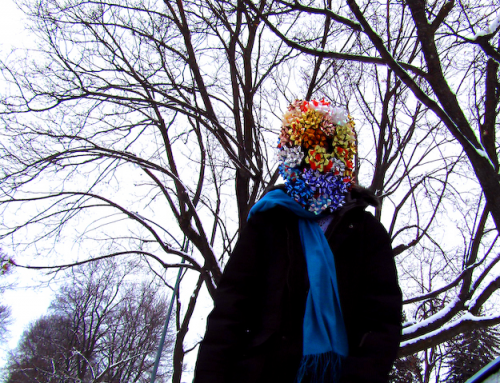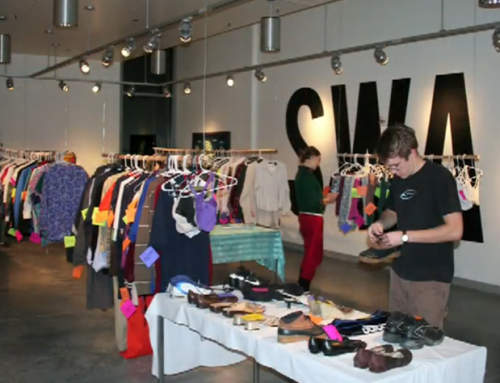We’ve always loved David Blaine for the way he rides the fence between mass entertainment and performance art. What, after all, has performance art ever strived for, if not the provocation that Blaine achieves? He’s thought of by many as an egomaniacal attention seeker and a hack illusionist. He’s puzzled over, and he inspires. When Blaine hung above the Thames river in London in a plexi-glass box—without food—for 44 days, he stated that he believed “human suffering is the greatest work of art.” Early in his performance, he was assaulted by an angry crowd that threw eggs, pens, and fruit at his clear cage. By the final days of the display, this aggression appeared transformed into a kind of heartfelt wonder. Recognized performance artists such as Chris Burden, Valie Export, Marina Abromovic and Vito Acconci have frequently sought in their audiences just such a metamorphic reaction. As Blaine well knows, a good art work is like a magic trick.
[slidepress gallery=’david-blaine-art-history’]
If we consider the history of martyr archetypes, we might say Jesus was one of the first performance artists. Jesus offered his own body to transform others. He made an example of his own will to endure. He gave up in order to gain—and in so doing, suffered the most horrific brutalities. Seen in the proper light, Jesus’s will looks like the will of many artists who have chosen to inflict suffering on themselves for symbolic—for artistic—reasons. It is in this tradition that David Blaine Art History proposes Blaine as a modern-day martyr, as an artist.
These images were created for a friend who teaches art history, and more specifically, a class on entertainment violence. Over the course of a semester at Whitman—a small liberal arts college in the Pacific Northwest—she projected the doctored images as originals, without alerting students to the change. Students discussed the images in-depth, but never noticed that anything was amiss. We thought it was most fitting to submit this project before the eyes of an art history class at a small liberal arts college such as Whitman. In this way we sought to fuse a high culture appreciation of the canonical arts with an art that is more controversial and contemporary. Toward the end of the term we gave a lecture on violence in performance art in which we revealed the experiment. We’d worried a bit that one or two students might get righteous and complain that they’d been deprived of seeing the “real” painting, cheated of their paid-for education. But hopefully, just the opposite is true.






Leave A Comment